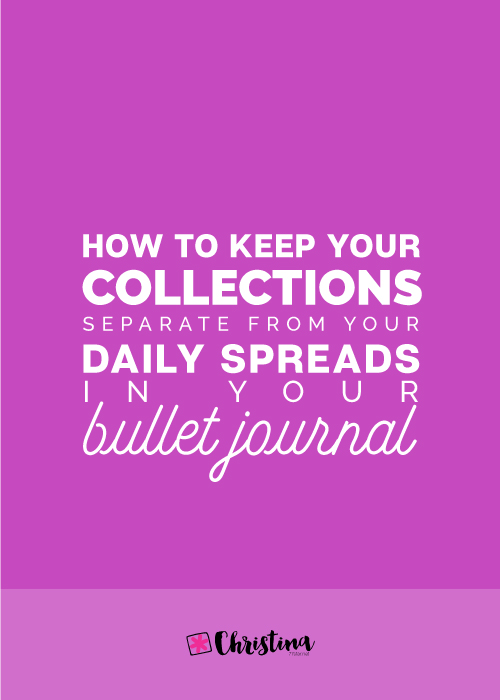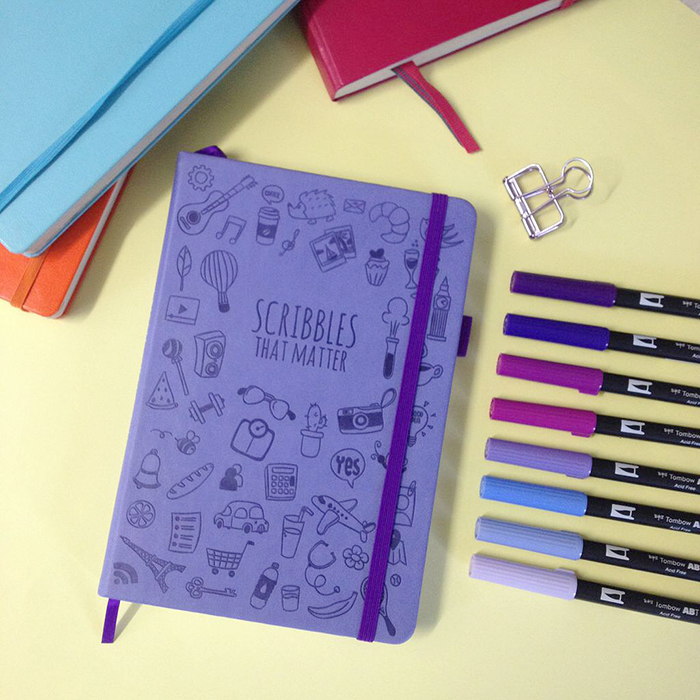How to keep your Collections separate from your Daily Spreads in your Bullet Journal
There's quite a few people that don’t like to mix their dailies and weeklies with all the other collections that they create in their bullet journal, and that's one of the issues they have with this planning system.
And even though bullet journaling is a planning system that shows you how to create your own planner one day at a time and to add spreads and collections as you go along, I have to admit that even for me, there are times that I would prefer to organise my pages in sections and categories instead.
So, here are some ways that can help you to overcome this issue:
1. START BACKWARDS
You can simply start and place your collections and various spreads you want to keep separate from your daily and monthly planning, at the back of your notebook and work from the back forwards.
This can be done either by having the notebook as normal and create as you go along, or you can flip it upside down and start creating that way. It all depends on what you prefer.
You can still use the index to archive your entries, so that you know where everything is. You can also choose to have a separate Index page for your spreads and collections, like Katie does with her Index Page. As you can see, she has one page dedicated to all the collections she creates and the other page to write down all the monthly entries.
CONS:
Some people might find this way a bit awkward, since they're not used to writing from the back to the front.
2. SEPARATE YOUR NOTEBOOK
You can choose to separate your notebook from the very beginning, and start adding all your collections at the last 1/3 of your bullet journal. This is based on how many pages on average you use for your daily planning and how many you use for your spreads and collections.
You can use your page markers or a separate tab to know where the collections part starts.
CONS:
You might end up having used up either one of the sections (i.e. your daily/weekly spreads or your collections part), while you have more pages left on the other section of the notebook.
3. USE A DIFFERENT TYPE OF NOTEBOOK
You can use a disc bound notebook or a ring binder notebook.
That way you can create sections and move around your pages as many times as you want. You can also keep the same collections and spreads and just change the daily / weekly / monthly pages as you go along. That way, you don't have to recreate your spreads every time you change a notebook.
There's lots of this type of notebooks online. I personally have used and love the William & Hannah notebook and the Jane's Agenda one, and I totally recommend them both.
CONS:
I’m talking more about the pros and cons of this type of notebook in this blog post.
4. USE TWO DIFFERENT NOTEBOOKS
I know some people might find this weird, but you can use 2 different bullet journals - one for your daily planning and one for your Collections and spreads.
And even though this might not be practical for some, it does provide a solution to this problem, especially if you want to keep using bullet journal notebooks like the Leuchtturm1917 or the Scribbles That Matter ones.
CONS:
Having to carry around 2 notebooks instead of one.
Does mixing your day to day planning with your collections bother you? What do you do about that? Do you find any of the above solutions helpful?













